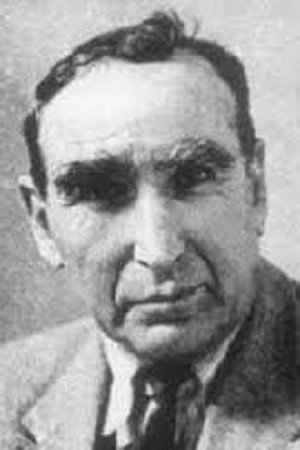Máximo Calvo Olmedo (d. 1973)
Alias:
Máximo Calvo
Birthplace:
Bercianos del Real Camino, León, Spain
Died:
September 8, 1973
Born in Bercianos del Real Camino Francés (province of León, Spain), Calvo Olmedo left his hometown at the age of 17 to travel to America in search of opportunities. After touring several countries, he decided to settle in Balboa, Panama, where he worked as a painter and photographer, trades he had learned in his homeland. The details of his apprenticeship in art and filmmaking are not known; however, it is known that in America he had the opportunity to handle film cameras, which were handled only by experienced photographers. In addition to working for some years as a photographer, Olmedo also worked as a distributor for 20th Century Fox in Balboa, a production company with which he filmed the War between Panama and Costa Rica (1918). After living in Panama for 19 years, Olmedo traveled to Cali in 1921 with the purpose of directing the film María, a milestone in Colombian film history. As the first silent film made in the country, María was shown to great acclaim at the Teatro Salón Moderno in Cali. The film, which was based on the novel of the same name María by Cali writer Jorge Isaacs, raised a large sum of money, which allowed it to be successfully distributed in Mexico and Argentina. The film was shown two years later at the great Salón Olympia in Bogotá; however, it went unnoticed by the press, which focused on La tragedia del silencio, a film that was advertised as authentically Colombian'. In spite of this, María will always be recognized as the precursor film of national cinema. In 1923, Calvo decided to settle permanently in Cali with his wife Juana Vega. At that time the filmmaker made several cinematographic works in Cali and in other cities of the country, among which stands out the photography work he did in the film Nido de Cóndores (1926), directed by Alfonso Mejía Robledo as a commission from the Sociedad de Mejoras Públicas, which intended to produce a propagandistic film of the city of Pereira. A few years later, he created the Calvo Film Company of Cali, which specialized in the production of silent documentaries. Calvo also worked as scriptwriter, producer, director and photographer of Flores del Valle, the first feature film with synchronized sound made in Colombia. He later made El castigo del fanfarrón (1945), his second feature film with sound. After years of frustration due to the scarce diffusion and difficult distribution of national films, Olmedo abandoned the production of cinematographic pieces and focused on corporate advertising filming. Under the government of General Gustavo Rojas Pinilla, he participated in the nascent development of the national television station, with which he covered events such as the National Sports Games. He left a fabulous film legacy for Valle del Cauca and is considered the most important film pioneer in Colombia. He died at an advanced age in Cali in 1973.
